
Buyer’s Guide: Choosing the Right Rollator Walker
2024-08-28 15:30
As the aging of the population intensifies, rollator walkers have gradually become the first choice for more and more elderly people and people with mobility impairments. In this detailed buyer's guide, we'll delve into every aspect you need to consider when choosing the right rollator walker, from understanding what a rollator walker is, to its various types, tips for use and care, to help you make the decision An informed purchasing decision.
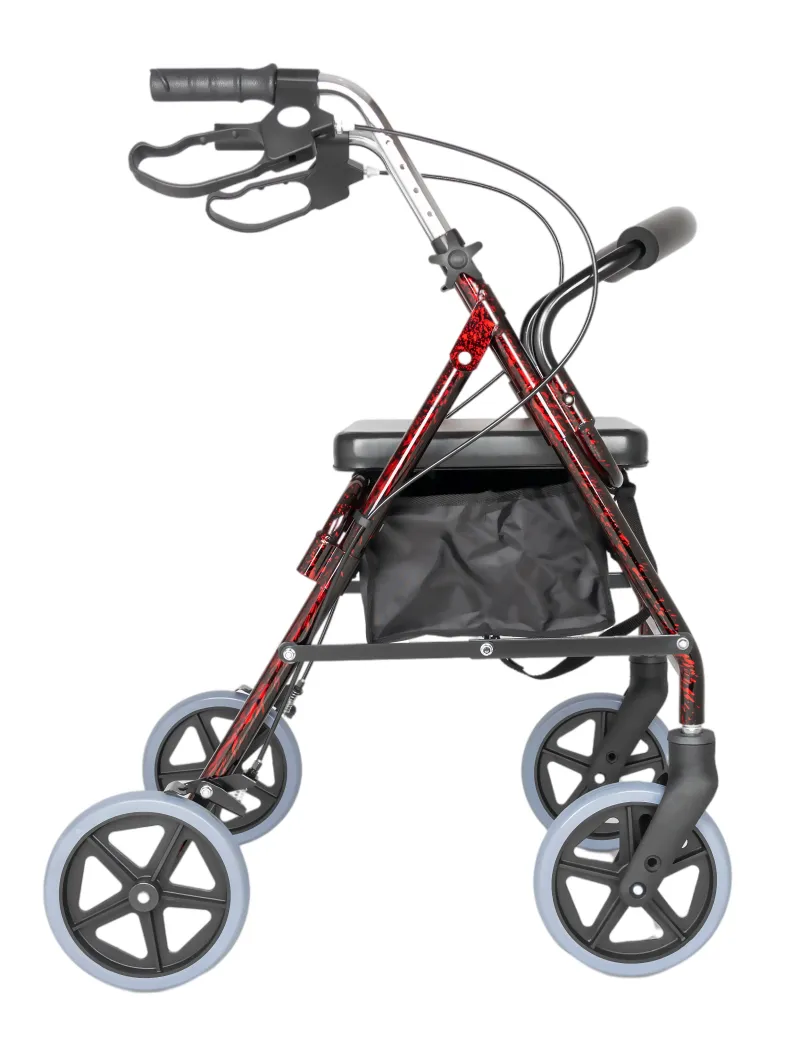
What Proportion Will Buy Rollator Walkers in 2023?
According to market survey data in 2023, the sales volume of rollator walkers accounts for about 45% of the entire mobility aid market. Compared with traditional walking aids, rollator walkers are favored by more and more consumers because of their convenience and versatility. Especially among the elderly over 65 years old, the use of rollator walkers has increased significantly. This trend reflects people's demand for more safe, comfortable and practical walking aids, and also shows the potential of rollator walkers in the future market.
What Is a Rollator Walker?
A rollator walker, commonly known as rolling walker, is a walking aid equipped with wheels designed to help people with mobility impairments maintain balance and stability when walking. Unlike traditional walking aids, rollator walkers are equipped with three or four wheels and usually come with a braking system, adjustable handle height and a comfortable seat for the user to rest when needed.
The rollator walker is designed to assist those who are able to stand and walk but need additional support. With the rollator walker, users can move more easily without worrying about falling or being unable to complete walking tasks due to fatigue. It is suitable for use indoors as well as providing effective support outdoors.
Who Should Use Rollator Walker?
A rollator walker can provide necessary balance and stability for those at risk of falling and support body weight more evenly than other devices such as canes. Rollator walker is mainly suitable for the following groups of people: the elderly, people with mobility issues, rehabilitation patients, and the frail.
● The elderly: As they age, many elderly people will develop balance problems or muscle weakness. The rollator walker provides them with the necessary support to help them maintain independent walking.
● People with limited mobility: For those who have limited mobility due to recovery from surgery, chronic illness or other health problems, the rollator walker can help them reduce the risk of falls and maintain mobility.
● Rehabilitation patients: Recovering patients, such as those recovering from surgery, may need additional support to get used to walking again. The rollator walker provides a safe environment for them to gradually regain their mobility.
● Weak people: For some people with weak physical strength or insufficient endurance, the rollator walker allows them to have a tool they can rely on at any time when going out or standing for a long time to reduce the physical burden.
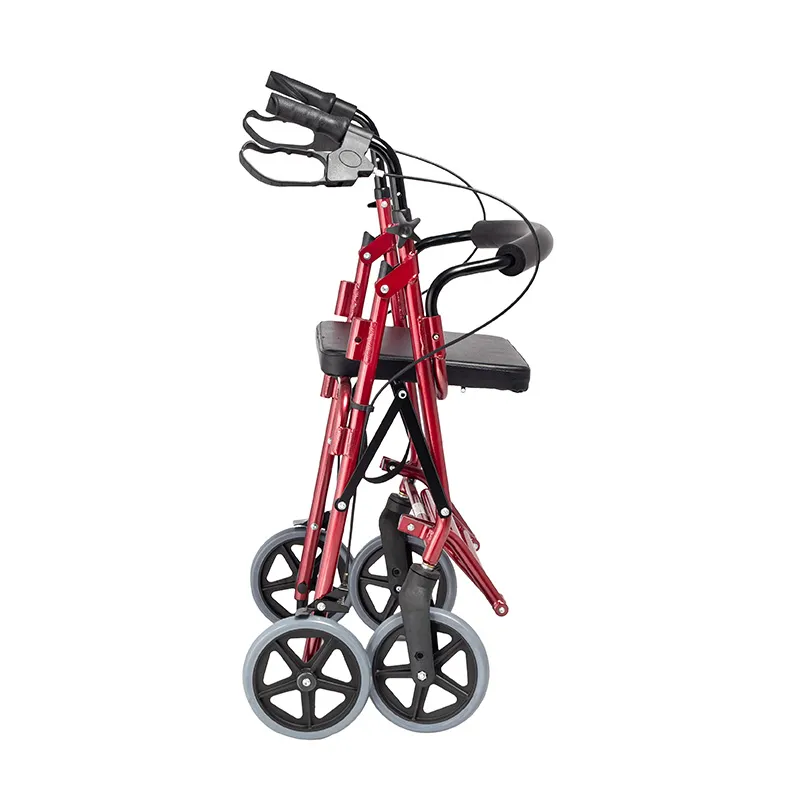
What Are the Pros And Cons of Rollator Walker?
Pros of Rollator Walker:
● Easy to move
● Versatility
● High stability
● Adjustability
The rollator walker is equipped with wheels and can be easily pushed, reducing the user's physical exertion. Users do not need to lift walking aids, just push them forward. In addition, most rollator walkers are equipped with seats, so users can sit down and rest at any time when they feel tired. In addition, rollator walkers often come with baskets or bags for easy carrying of items.
The rollator walker also provides four support points (four-wheel rollator walker), which is more stable than traditional walking aids and reduces the risk of falling. The handle height of a rollator walker can usually be adjusted to suit users of different heights.
Cons of Rollator Walker:
● Not suitable for small spaces
● Requires a certain amount of upper body strength
● Higher price
Due to the design of a rollator walker, especially a four-wheeled rollator walker, its wider width may not fit in small indoor spaces, such as narrow hallways or crowded rooms. Although the rollator walker is equipped with wheels, propelling the vehicle forward still requires a certain amount of upper body strength, which may not be ideal for users with weak arm strength. Additionally, rollator walkers are generally more expensive than traditional walking aids, which may be a barrier to consideration for some users.
Rollator Walker Vs. Walking Aids, Which One is Best?
The main difference between a rollator walker and traditional walking aids is whether it is equipped with wheels. Traditional walking aids usually do not have wheels, and users need to lift the walking aids to move forward, which may be laborious for some users with weak physical strength. The rollator walker is equipped with wheels, and users only need to push it to move forward, reducing physical exertion.
The rollator walker is more suitable for outdoor use: the wheels of the rollator walker make it more flexible when moving outdoors, especially on uneven ground, such as grass, sand, etc., the rollator walker performs better. Rollator walkers are usually equipped with seats so that users can rest at any time, which is very practical when walking or waiting for a long time.
Walking aids are more suitable for indoor use: Since walking aids do not have wheels, they are usually lighter and take up less space, making them more suitable for use in narrow indoor spaces. Because walking aids have no wheels and rely entirely on user control, they are especially suitable for those who need very stable support, such as patients in the early stages of recovery.
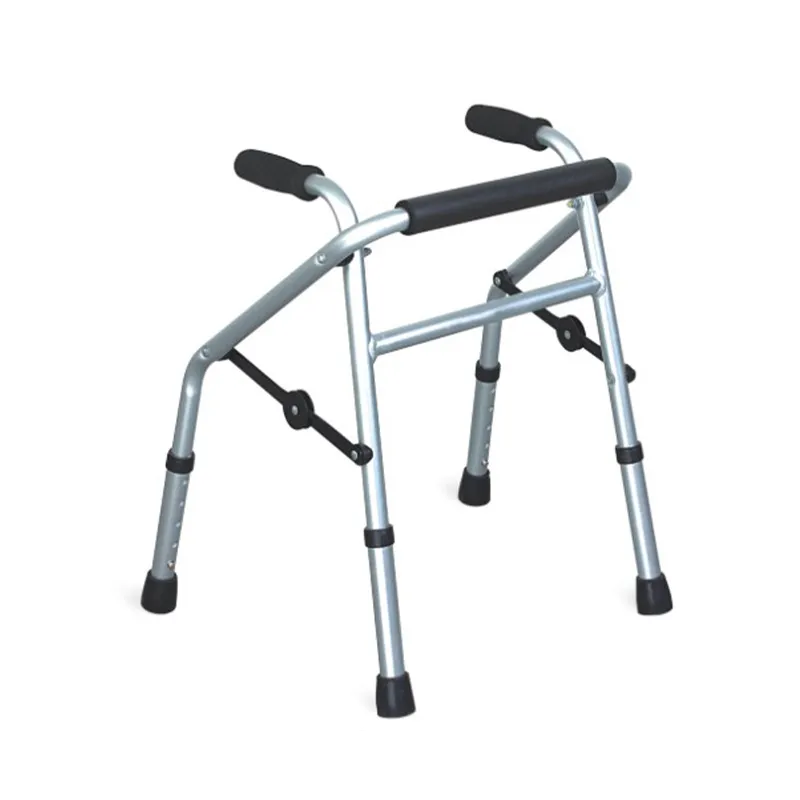
So, Do I Need Rollator or Walking Aids?
Choosing a rollator walker or walking aids mainly depends on the user's specific needs and living environment. If the user needs to walk outdoors frequently or needs to rest at any time during walking, then the rollator walker will be a better choice. The rollator walker's wheels and seat are designed to provide extra support and convenience.
But if the user mainly uses it indoors and needs a very stable support tool, walking aids may be more suitable. Walking aids do not have wheels, which means that they rely entirely on the user's control and provide more stable support.
What Are the Types of Rollator Walkers?
Rollator walkers are mainly divided into two categories: three-wheel rollator walkers and four-wheel rollator walkers. Each type has its own unique advantages and disadvantages and is suitable for different usage scenarios and user needs.
Three Wheel Rollator Walker
The advantage of the three-wheeled rollator walker is that it is lighter than the four-wheeled rollator walker, more flexible in turning, and suitable for use in narrow spaces. Due to the three-wheel design, it is more compact and suitable for users who need to turn frequently or walk in smaller spaces. The disadvantage is that because there are only three support points, the three-wheel rollator walker is slightly less stable than the four-wheel rollator walker and is not suitable for people who require extremely high stability.
Four Wheel Rollator Walker
The advantage of the four-wheel rollator walker is that it provides better stability and is suitable for use outdoors or when walking long distances. Most four-wheel rollator walkers also come with a comfortable seat where users can rest at any time when they feel tired. The disadvantage is that the four-wheel rollator walker is relatively heavy and may not be as flexible as the three-wheel rollator walker when turning, making it unsuitable for use in narrow spaces.
In addition, the rollator walker can also be segmented according to other functions, such as folding rollator walker, heavy-duty rollator walker, etc. These types of rollator walkers provide more choices for users with different needs.
What Should You Consider Before Buying a Rollator Walker?
When choosing a rollator walker, there are several key factors to consider to ensure you purchase the right product for your needs.
Three-wheeled vs. four-wheeled - As mentioned above, the three-wheeled rollator walker is more lightweight and flexible and suitable for use in small spaces; while the four-wheeled rollator walker is more stable and suitable for outdoor use. It is important to choose the appropriate type based on your usage environment.
Wheel Size - The wheel size of a rollator walker directly affects its performance on different surfaces. Generally speaking, larger wheels are suitable for outdoor uneven surfaces, such as grass, gravel roads, etc.; while smaller wheels are more suitable for indoors or flat roads. If you mainly use your rollator walker outdoors, it is recommended to choose larger wheel sizes.
Seat - The seat of a rollator walker is a very important feature for those users who need to rest during walking. Seat comfort, weight capacity, and height adjustment are all factors to consider. Make sure the seat height is appropriate for your leg length, allowing your feet to rest flat on the ground when you sit down.
Braking System - A rollator walker is usually equipped with a handbrake system to stop its progress when needed. Checking whether the braking system is sensitive and easy to operate is a step that cannot be ignored before buying. Especially for those walking downhill or on slopes, the reliability of the brakes is crucial.
Storage - Many rollator walkers come with baskets or bags for carrying personal items. If you often need to carry items, such as a wallet, cell phone or shopping bag, choosing a rollator walker with ample storage space will be very convenient.
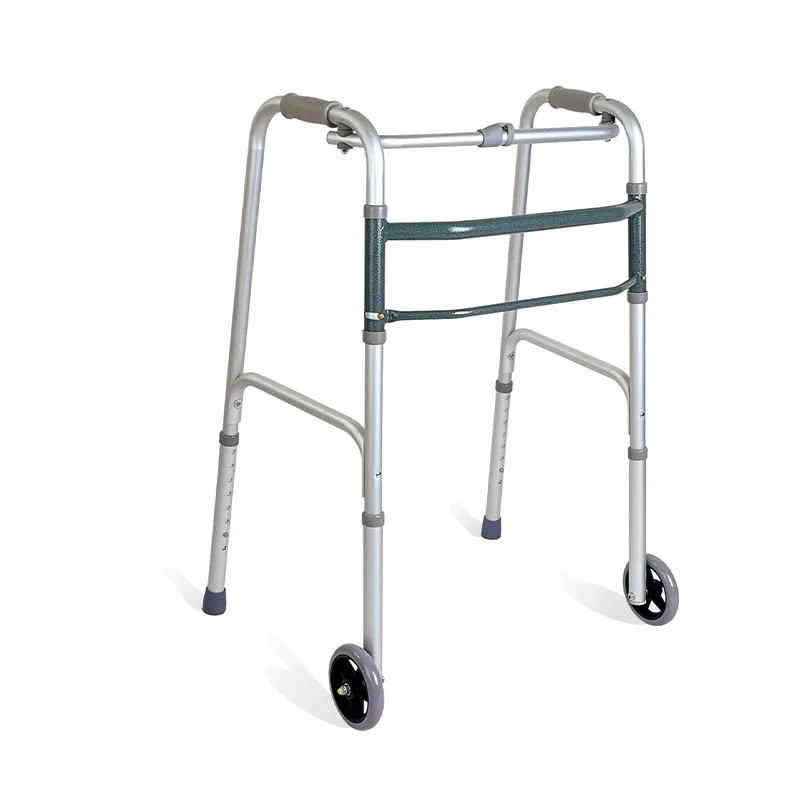
What Is the Overall Width And Weight of the Rollator Walker?
The width and weight of the rollator walker directly affect its portability and applicable environment. Generally speaking, the width of a rollator walker is between 20 and 30 inches, depending on whether it is a three-wheel or four-wheel design. Wider rollator walkers provide better stability but can be awkward to use in tight spaces.
Rollator walkers typically weigh between 15 and 25 pounds, depending on materials and design. Lighter rollator walkers are easier to carry and store, but may sacrifice some stability and durability.
What Is the Load-Bearing Capacity of the Rollator Walker?
The weight capacity of a rollator walker typically ranges from 250 to 350 pounds, depending on the model and manufacturer. For heavier users, it is important to choose a rollator walker with a higher load-bearing capacity to ensure safety and stability during use.
Can the Rollator Walker be Folded?
Most modern rollator walkers have a folding feature that allows users to store or carry them when not in use. The design of the folding rollator walker allows it to be reduced in size when not in use, making it easy to store in the trunk of a car, in a small space at home, or to take with you when traveling.
How to Use Rollator Walker Correctly?
Proper use of a rollator walker can not only improve walking comfort, but also reduce the risk of accidental falls. Here are some basic usage tips:
● Adjust the handle height: Make sure the handle height of the rollator walker is suitable for your height. The ideal height should allow your arms to bend easily and your shoulders to relax.
● Maintain correct posture: When using the rollator walker, you should maintain an upright posture and avoid excessive bending or leaning forward. This reduces pressure on your waist and back.
● Braking operation: When preparing to stop, be sure to use the braking system first to ensure that the rollator walker is stable and stationary before performing other operations, such as sitting down or turning around.
● Push smoothly: When pushing the car, the pace should be consistent with the moving speed of the rollator walker, avoid being too fast or too slow to maintain stability.
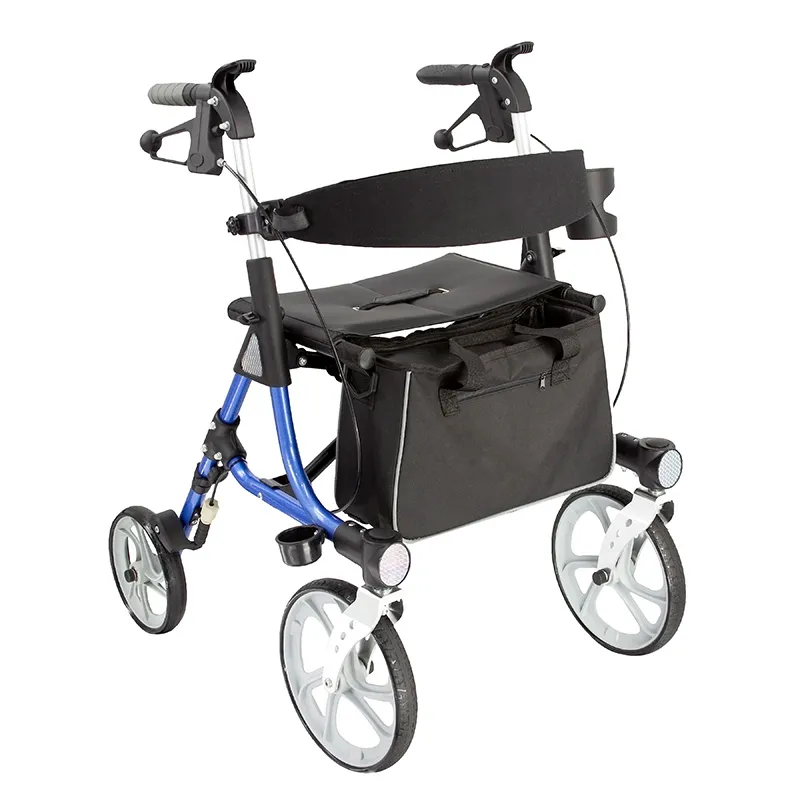
How to Clean a Rollator Walker?
Cleaning and maintenance of a rollator walker is essential to extend its life. It is recommended to regularly wipe all parts of the rollator walker with a mild detergent and a damp cloth, especially the handles, seat, and wheels. For rollator walkers that are used outdoors more, the wheels and brakes should also be checked regularly to ensure they are working properly.
How Much Does a Rollator Walker Cost?
The price of a rollator walker varies depending on the brand, features, and materials. Generally, the price range of a rollator walker is between $100 and $500. Basic rollator walkers are more affordable, while rollator walkers with advanced features such as larger wheels, comfortable seats, and high-end brakes will cost more.
Is a Rollator Walker Covered by Medicare?
Medicare Part B generally covers the cost of walking aids, including rollator walkers, but specific coverage depends on an individual's insurance plan and medical needs. Before purchasing a rollator walker, users should check with their insurance company or medical provider to find out if their rollator walker is covered by Medicare.
Can I Bring My Rollator Walker on Board?
Rollator walkers are usually allowed on board free of charge as medical aids. Most airlines allow rollator walkers to be checked at the gate and picked up at the destination. It is recommended to contact the airline before traveling to confirm their policy and inform the staff in advance when checking in at the airport.
Choosing the right rollator walker is essential for those who need additional mobility support. By understanding the various types, functions and usage tips of rollator walkers, you can better choose the product that suits your needs. Whether using it at home or walking outdoors, a rollator walker can provide you with the necessary support to help you maintain an independent life.








